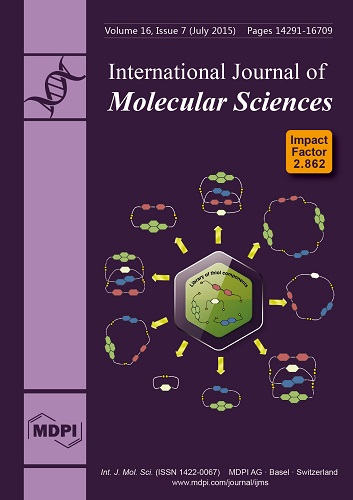The impact of shifts in the spectral quality of light on morphogenesis, flowering, and photoperiodic gene expression during exposure to light quality of night interruption (NI) was investigated in
Dendranthema grandiflorum. The circadian rhythms of plants grown in a closed walk-in growth
[...] Read more.
The impact of shifts in the spectral quality of light on morphogenesis, flowering, and photoperiodic gene expression during exposure to light quality of night interruption (NI) was investigated in
Dendranthema grandiflorum. The circadian rhythms of plants grown in a closed walk-in growth chamber were interrupted at night for a total of 4 h, using light-emitting diodes with an intensity of 10 μmol·m
−2·s
−1 PPF. The light quality of the NI was shifted from one wavelength to another after the first 2 h. Light treatments consisting of all possible pairings of blue (B), red (R), far-red (Fr), and white (W) light were tested. Plants in the NI treatment groups exposed to Fr light grew larger than plants in other treatment groups. Of plants in NI treatment groups, those in the NI-WB treatment grew the least. In addition, the impact of shifts in the light quality of NI on leaf expansion was greater in treatment groups exposed to a combination of either B and R or R and W light, regardless of their order of supply. Flowering was observed in the NI-RB, NI-FrR, NI-BFr, NI-FrB, NI-WB, NI-FrW, NI-WFr, NI-WR, and SD (short-day) treatments, and was especially promoted in the NI-BFr and NI-FrB treatments. In a combined shift treatment of B and R or B and W light, the NI concluded with B light (NI-RB and NI-WB) treatment induced flowering. The transcriptional factors
phyA,
cry1 and
FTL (
FLOWERING LOCUS T)
were positively affected, while
phyB and
AFT were negatively affected. In conclusion, morphogenesis, flowering, and transcriptional factors were all significantly affected either positively or negatively by shifts in the light quality of NI. The light quality of the first 2 h of NI affected neither morphogenesis nor flowering, while the light quality of the last 2 h of NI significantly affected both morphogenesis and flowering.
Full article






